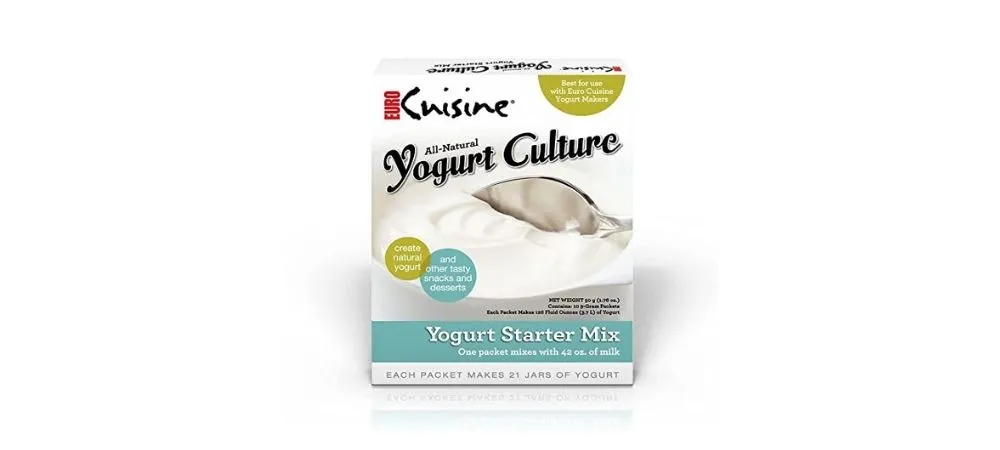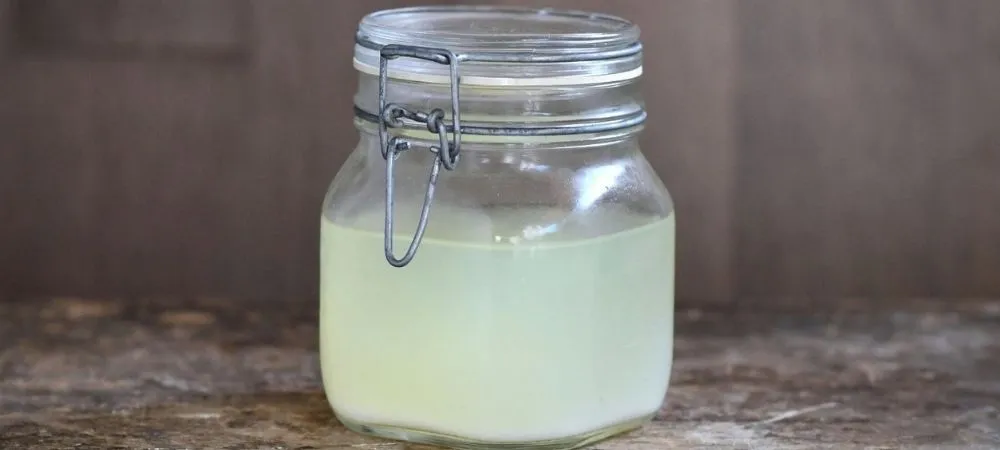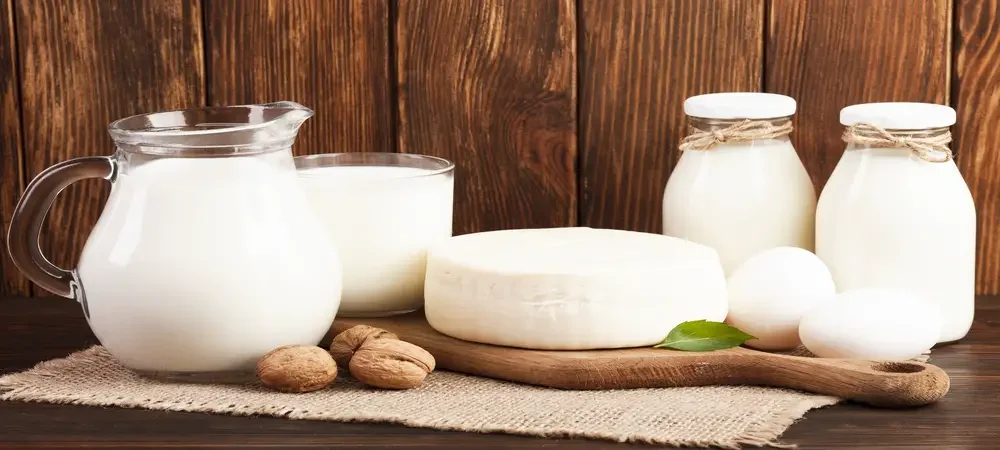Yogurt has been a common food throughout many cultures and demographic groups. Often made at home, Yogurt is the resultant of the fermentation of warm milk with yogurt culture. But a question which frequently surface the internet – What is the ideal milk temperature at which yogurt culture should be added? What temperature kills Yogurt culture?
In this article, we will explore the various aspects covering the ideal temperature for yogurt culture.
For processing yogurt, adding yogurt culture to the milk at a considerable temperature is important. If you add these cultures to the hot milk, these bacteria will be killed due to excessive heat.
Technically, yogurt bacteria can’t survive in temperatures above 54 degrees celsius.
Store-bought yogurt undergoes several modifications as compared to the natural processing for homemade yogurt. Such changes are also responsible for killing the bacteria. Hence most of the store-bought yogurts are devoid of fermenting bacteria.
Common Types of Yogurt Cultures
There are two main types of yogurt cultures: lactic acid bacteria (LAB) and bifidobacteria.
1. Lactic Acid Bacteria (LAB)
Two of the most common LAB used in yogurt production are:
a.Lactobacillus bulgaricus – A mesophilic culture that thrives in moderate temperatures, usually between 68-77°F (20-25°C).
b.Streptococcus thermophilus – A thermophilic culture that prefers higher temperatures, typically between 104-122°F (40-50°C).
2. Bifidobacteria
Bifidobacteria are often added to yogurt for their probiotic properties and work alongside LAB to support a healthy gut microbiome.
Role of Yogurt Cultures in the Fermentation Process
Yogurt cultures break down lactose in the milk and produce lactic acid. This process not only imparts flavor and texture to the yogurt but also preserves it by creating an acidic environment that inhibits harmful bacteria growth.
Optimal Temperature Range for Yogurt Cultures
Here is the suggested optimal temperature range for various yogurt cultures:
A. The Importance of Maintaining Proper Temperature
Proper temperature is crucial for yogurt cultures to grow and multiply, ensuring a successful fermentation process. Inadequate temperatures can lead to a thin, watery yogurt or even spoilage due to harmful bacteria growth.
B. The Ideal Temperature Range for Yogurt Cultures
The optimal temperature range for yogurt cultures depends on the type of culture used:
-
Thermophilic cultures (e.g., S. thermophilus) prefer temperatures between 104-122°F (40-50°C).
-
Mesophilic cultures (e.g., L. bulgaricus) thrive in moderate temperatures, usually between 68-77°F (20-25°C).
C. Factors Affecting the Optimal Temperature Range
The ideal temperature for yogurt cultures may vary based on:
- Type of culture
- Fermentation time
- Other environmental factors such as humidity and altitude
The Temperature That Kills Yogurt Cultures
Heat sensitivity is an essential factor to consider when making yogurt, as excessive heat can kill yogurt cultures and hinder the fermentation process.
The lethal temperature for yogurt cultures varies depending on the type of culture:
-
Thermophilic cultures (e.g., S. thermophilus) can generally withstand temperatures up to 130°F (54°C) before dying off.
-
Mesophilic cultures (e.g., L. bulgaricus) are more sensitive to heat and may die off at temperatures above 100°F (38°C).
Impact of High Temperatures on Yogurt Cultures
Exposure to high temperatures can have detrimental effects on yogurt cultures, such as:
- Denaturation of proteins, which can alter the culture’s structure and functionality.
- Inhibition of the fermentation process, resulting in a thin, watery yogurt or spoilage.
- Loss of beneficial properties, as the heat can reduce the viability and effectiveness of probiotics.
Understanding the temperature sensitivity of yogurt cultures is essential for producing high-quality yogurt at home. Always ensure that the milk is cooled to the appropriate temperature before adding cultures and maintain a consistent temperature throughout the fermentation process.
How to maintain the temperature in Different seasons?
The temperature of the milk to ferment also varies with the season. In summers, keep the milk lukewarm to ferment it for yogurt processing. In winters, you have to keep the bacterial live warm with consistency.
Ideal Temperature in Winters for yogurt making
In winters, you can notice a fall in room temperature below 21 degrees celsius. Hence, to keep the pace of the temperature, you need to keep the yogurt jar closed and place them in a cozy place like an oven to maintain the temperature.
- To add extra insulation in chilly winters, you can use a towel or any warm cloth.
- Another way of processing yogurt in winter is using a beverage thermos.
- Keeping your yogurt near any electronic device helps in maintaining the temperature of the milk. These electronic devices emit a lot of heat. For example – the top of the refrigerator or near the AC vent.
How to maintain the temperature in summers?
Like winters, there are several ways of maintaining milk temperature in summer:
- Cooling the temperature of milk up to 37 degrees Celsius before adding bacteria.
- Keep the yogurt jar in proximity to the cold surfaces. to maintain the temperature in the face of external heat.
- Put the yogurt jar in an airtight cooler and add ice packs to keep it cool during extremely hot days.
Tips to Maintain Yogurt Cultures’ Viability
To preserve the viability of your yogurt cultures, follow these tips:
A. Proper Storage of Yogurt Starter Cultures
Store yogurt starter cultures in a cool, dry place, such as the refrigerator, to prolong their shelf life and maintain their potency.
B. Using a Thermometer for Accurate Temperature Control
A thermometer can help ensure that the milk is at the right temperature before adding cultures and monitor the temperature during fermentation.
C. Cooling the Milk to the Appropriate Temperature Before Adding Cultures
Cool the milk to the optimal temperature for your chosen culture (thermophilic or mesophilic) before adding the cultures to avoid heat damage.
D. Maintaining a Consistent Temperature During Fermentation
Use a yogurt maker or other methods (such as a warm water bath or insulated container) to maintain a consistent temperature during the fermentation process. This will help the yogurt cultures grow and multiply, ensuring a successful fermentation.
Frequently Asked Questions
At what temperature does yogurt culture die?
Yogurt culture dies at a temperature that is well above 47degrees Celsius. Yogurt bacterium can only survive at less than 47 degrees Celsius.
Is there anyone who can’t eat yogurt because of lactose intolerance?
There is a very small percentage of people who experience intolerance to dairy products. If you are lactose intolerant, avoid yogurt.
Does frozen yogurt contain live and active cultures?
Live and active cultures in frozen yogurt turns dormant on freezing. Once you thaw the yogurt, they become alive. For atleast few weeks, probiotics survive in your freezer.
How to make yogurt last longer?
The shelf life of yogurt on the refrigerator shelf is about 2 weeks, but if you keep it in the freezer, it can last for up to 2 months. Store it properly to improve its shelf life.
How hot is too hot for yogurt?
To grow the yogurt bacteria properly, the temperature should be around 118°F .
Is it bad to microwave yogurt?
By over-heating the yogurt, you will end up killing the yogurt cultures in it. Hence, you should not heat the yogurt using the microwave or other heating appliances.
At what temperature does yogurt culture grow best?
32-40 degrees Celsius is the ideal temperature for bacteria to grow. The bacteria will ferment milk sugar into lactic acid which gives yogurt its sour taste and thick texture.
Conclusion:
According to Food and Drug Administration, live and active cultures are necessary to make yogurt. If you will heat yogurt beyond certain temperature, it will kill the probiotic bacteria and the yogurt will be devoid of any active cultures.
The duration of fermentation plays a vital role in deciding the neutral or acidic taste of yogurt. At high temperatures, yogurt often turn acidic due to the accelerated growth of bacteria.
It is crucial to know what temperature kills the bacteria to assess the right temperature for yogurt.










